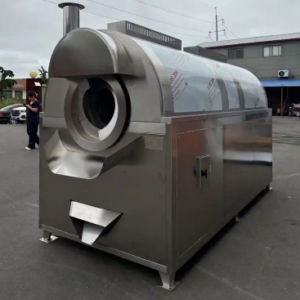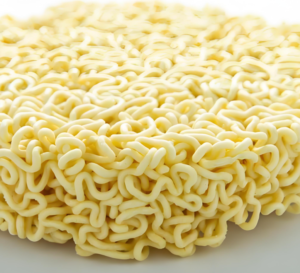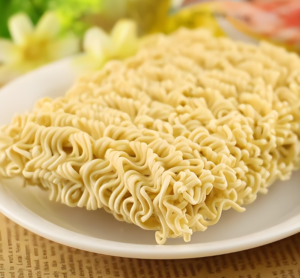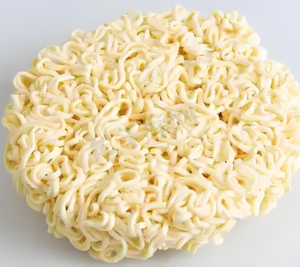<h1>How to Choose a Puffed Food Production Line</h1>Puffed foods, such as snacks and cereals, are popular in the global market due to their light texture, long shelf life, and versatility. Selecting the right production line is crucial for manufacturers aiming to optimize efficiency, ensure product quality, and meet regulatory standards. This article guides B2B professionals in the food processing industry through the key considerations for choosing a puffed food production line, helping you make informed decisions that drive business growth.
corn puffed snack food making machine
ToggleUnderstanding Puffed Food Production Lines
Puffed food production lines use extrusion technology to create airy, expanded products from ingredients like grains, starches, and additives. These lines typically include extruders, dryers, cutters, and packaging systems, transforming raw materials into ready-to-eat snacks.
The process begins with mixing and conditioning ingredients, followed by extrusion where heat and pressure expand the mixture. Key benefits include high production speeds and the ability to create various shapes and flavors, making these lines essential for competitive markets.
When evaluating options, consider the line’s capacity to handle different production volumes, from small-scale operations to large industrial setups. This ensures scalability as your business expands.
Key Factors to Consider in Selection
Choosing the right puffed food production line involves assessing several critical factors. Start with your production needs, such as daily output and product variety, to narrow down suitable options.
Energy efficiency is another vital aspect. Modern lines often feature advanced heating systems that reduce energy consumption, lowering operational costs and supporting sustainability goals in the food industry.
Material quality matters too. Opt for lines made from stainless steel or food-grade materials to prevent contamination and comply with international safety standards like FDA or EU regulations.
Production Capacity and Scalability
Assess the line’s output capacity, measured in kilograms per hour, to match your demand. For instance, a line producing 100-500 kg/h suits small to medium enterprises, while larger ones handle over 1000 kg/h for high-volume production.
Scalability allows for future upgrades, such as adding modules for new product lines. This flexibility helps businesses adapt to market changes without full replacements.
Consider integration with existing equipment to avoid disruptions. A compatible system can enhance overall efficiency and reduce downtime during installation.
Technology and Automation Levels
Advanced technology improves precision and consistency. Look for lines with PLC (Programmable Logic Controller) systems for automated control of temperature, speed, and pressure.
Automation reduces human error and labor costs, with features like automatic feeding and monitoring. This is especially useful in B2B settings where reliability is key to maintaining supply chains.
Some lines incorporate IoT for real-time data analytics, enabling predictive maintenance and better process optimization for long-term profitability.
Quality and Safety Standards
Ensure the production line meets global standards such as ISO 22000 for food safety. This certification guarantees that the equipment minimizes risks like microbial growth during puffing.
High-quality extruders prevent uneven puffing, which can affect texture and taste. Test samples from potential suppliers to verify output quality before purchasing.
Safety features, including emergency stops and protective guards, are essential to protect operators and comply with OSHA guidelines, reducing liability in international trade.
Types of Puffed Food Production Lines
There are several types of puffed food production lines, each suited to different products and scales. Single-screw extruders are ideal for simple puffed snacks, offering cost-effective solutions for beginners.
Twin-screw extruders provide more versatility, handling complex recipes with additives for flavored or fortified snacks. They are popular in B2B exports due to their ability to produce consistent results at higher speeds.
For specialized needs, co-extrusion lines create filled or multi-layered products, enhancing market appeal. Choose based on your target products, like breakfast cereals or savory snacks.
Comparing Single-Screw vs. Twin-Screw Systems
Single-screw systems are simpler and cheaper, with lower maintenance needs, making them suitable for basic operations. However, they may lack the precision required for diverse formulations.
Twin-screw systems excel in mixing and extruding, allowing for better control over density and expansion. This makes them a preferred choice for exporters targeting premium markets.
Ultimately, the decision depends on your budget and product complexity. Twin-screw lines might have a higher upfront cost but offer better ROI through increased productivity.
Cost Analysis and Budgeting
Budgeting for a puffed food production line involves initial costs, ongoing expenses, and potential returns. Entry-level lines can start at $50,000, while advanced systems may exceed $500,000, depending on features and capacity.
Factor in hidden costs like installation, training, and spare parts. Negotiate with suppliers for comprehensive packages that include these to avoid surprises.
Long-term savings come from energy-efficient designs and reduced waste. Conduct a cost-benefit analysis to ensure the investment aligns with your business’s financial projections.
Evaluating Return on Investment (ROI)
Calculate ROI by comparing the line’s productivity gains against its cost. For example, a line increasing output by 50% can pay for itself in under two years through higher sales volumes.
Consider market demand for puffed foods, which is growing globally due to trends in healthy snacking. This can accelerate ROI in regions like Asia-Pacific and North America.
Work with financial experts to model scenarios, ensuring the purchase supports sustainable growth in the competitive B2B landscape.
Supplier Reliability and After-Sales Support
Selecting a reliable supplier is as important as the equipment itself. Research manufacturers with a proven track record in foreign trade, such as those in China or Europe, known for quality puffed food lines.
Check for certifications and client testimonials. A supplier offering customization options can tailor the line to your specific needs, enhancing operational fit.
After-sales support, including warranties and technical assistance, ensures minimal downtime. Prioritize suppliers with global service networks for seamless international operations.
Importance of Maintenance and Training
Regular maintenance extends the line’s lifespan and maintains efficiency. Choose suppliers that provide detailed manuals and scheduled servicing programs.
Operator training is crucial for safe and effective use. Many suppliers offer on-site sessions, which can prevent common errors and improve production quality.
In the B2B sector, strong support reduces risks and builds long-term partnerships, making it a key selection criterion.
Case Studies: Successful Implementations
Real-world examples highlight the benefits of choosing the right puffed food production line. A mid-sized manufacturer in the US upgraded to a twin-screw system, increasing output by 40% and entering new export markets.
In Asia, a company integrated an automated line with IoT features, reducing energy use by 25% and achieving ISO certification, which boosted their B2B credibility.
These cases underscore the importance of thorough evaluation, showing how strategic choices lead to enhanced competitiveness and profitability.
Frequently Asked Questions
Here are some common questions from B2B professionals in the puffed food industry:
What is the typical lifespan of a puffed food production line?
A well-maintained line can last 10-15 years, depending on usage and technology. Regular upkeep is essential to maximize longevity.
How does extrusion affect nutritional value?
Extrusion can preserve or enhance nutrients through controlled processing, but overheating may degrade some vitamins. Choose lines with precise temperature controls.
Are there financing options for purchasing equipment?
Many suppliers offer leasing or financing plans, especially for international buyers. This helps manage cash flow in B2B transactions.
What maintenance frequency is recommended?
Weekly checks and monthly deep cleanings are ideal, with annual overhauls to ensure optimal performance and safety.
How can I verify a supplier’s reliability?
Review their portfolio, certifications, and client feedback. Visiting their facilities or requesting references can provide further assurance.
Conclusion
In summary, selecting the ideal puffed food production line requires careful consideration of factors like capacity, technology, costs, and supplier support to meet your business objectives. By prioritizing quality, efficiency, and compliance, you can enhance production capabilities and gain a competitive edge in the global market. Invest wisely to ensure long-term success and sustainable growth in the dynamic food processing industry.








